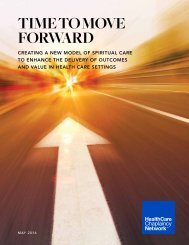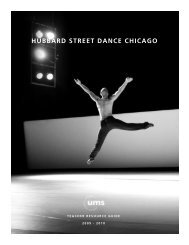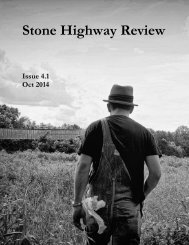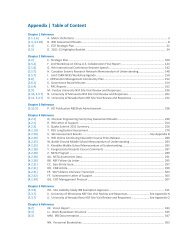Fries
Fries
Fries
You also want an ePaper? Increase the reach of your titles
YUMPU automatically turns print PDFs into web optimized ePapers that Google loves.
Charles C. <strong>Fries</strong>, linguistics and corpus linguisticsrelative amounts of that variation. … We do not assume that the absolutefrequency of occurrence of particular forms in the limited materialhere examined is in itself significant; we have simply tried to makesure of the relative frequency of the language usages appearing here inorder to give proportion to our picture of actual practice and to preventa false emphasis upon unusual or picturesquely interesting items.A simple example of this approach comes from <strong>Fries</strong>’s study of the intonation ofyes-no questions. He was bothered by descriptions that said that yes-no questionsnormally used rising intonation, but that falling intonation was used in specialcircumstances. He knew that his data for The structure of English containedmany yes-no questions with falling intonation. He therefore decided to explorethis issue by recording 39 programs of What’s My Line, a TV program in whicha panel of four judges used yes-no questions to determine the profession of acontestant. Recording this program provided him with a high concentration ofyes-no questions which he could then analyze. Table 3 summarizes the mostimportant of his results as described in <strong>Fries</strong> (1964: 248–249):Table 3: Distribution of rising and falling intonation on yes-no questions in 39programs of What’s my Line?General resultsRange of usage of falling intonationRanges by program Ranges of individualsTotal Rising Falling Minimum Maximum Minimum Maximum2561 981(38.3 %)1580(61.7 %)31.6 % 77.5% 57.2 % 72.7 %He found 2,561 examples of yes-no questions. Columns 2 and 3 show that over60 percent of the 2,561 yes-no questions in his data have falling intonation.Counting only rising intonations or only falling intonations would not have producedinformation which could be used to interpret the results. Such partialinformation would only repeat what was already known – that yes-no questionssometimes were expressed with rising intonations and sometimes with fallingintonations. Only by counting the incidence of both intonations on these questionscould he establish the patterns of choices.Similar instances of counting contrastive conflicting features come from hishistorical work (the first place he used this approach to the analysis of data.)Aside from his dissertation, i.e. his study of shall and will, and the work on theEarly Modern English dictionary, his historical work focussed on the changing105








